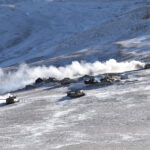David Baker, Demis Hassabis, and John Jumper received the Nobel Prize in Chemistry on Wednesday for their innovative work in predicting and designing the structure of proteins, which are the building blocks of life.
According to Nobel Committee for Chemistry Chair Heiner Linke, the prize recognised studies that established links between protein structure and amino acid sequencing.
For decades, chemistry, and biochemistry in particular, referred to that as a big challenge. He added that today’s award is for that breakthrough.
Hassabis and Jumper are both employed at Google Deepmind in London, while Baker is at the University of Washington in Seattle.
BREAKING NEWS
— The Nobel Prize (@NobelPrize) October 9, 2024
The Royal Swedish Academy of Sciences has decided to award the 2024 #NobelPrize in Chemistry with one half to David Baker “for computational protein design” and the other half jointly to Demis Hassabis and John M. Jumper “for protein structure prediction.” pic.twitter.com/gYrdFFcD4T
According to the Nobel committee, Baker created a novel protein in 2003, and his team has subsequently created a number of creative protein inventions, such as proteins that can be utilised as medicines, vaccines, nanomaterials, and tiny sensors.
It is just astounding how many designs they have, how many they have developed and published, and how varied they are. According to Professor Johan Qvist of the Nobel committee, “it appears that you can practically construct any type of protein with this technology.”
According to the committee, Hassabis and Jumper developed an artificial intelligence model that can predict the structure of almost all of the 200 million proteins that scientists have discovered.
According to Linke, the ability to forecast the three-dimensional structure of proteins has long been a goal of scientists.
John Jumper and Demis Hassabis cracked the code in 2020, four years ago. According to Linke, they were able to predict the intricate structure of nearly every known protein in nature through the deft application of artificial intelligence.
Creating novel proteins to learn how to exploit nature’s multi-tool for our own ends has been another goal of scientists. “David Baker solved this problem,” he continued. “He created computational methods that today allow researchers to create amazing new proteins with completely unique shapes and functions, creating countless opportunities for the greatest good for humanity.
For their work on quantum dots—tiny particles with a diameter of only a few nanometres that can emit extremely bright coloured light—three scientists were awarded the chemistry prize last year. These particles have uses in everyday life, such as electronics and medical imaging.
American winners of the medical award, Victor Ambros and Gary Ruvkun, kicked off six days of Nobel announcements on Monday. The physics prize went to John Hopfield and Geoffrey Hinton, two pioneers of machine learning.
On Thursday, the literature prize will be presented as part of the ongoing honours. On Friday, the Nobel Peace Prize will be revealed, and on October 14, the economics prize.
Alfred Nobel, the Swedish inventor who created the award, gave a gift of 11 million Swedish kronor (USD 1 million) as part of the prize. The laureates are asked to attend events on December 10, Nobel’s death anniversary, to accept their honours.




































